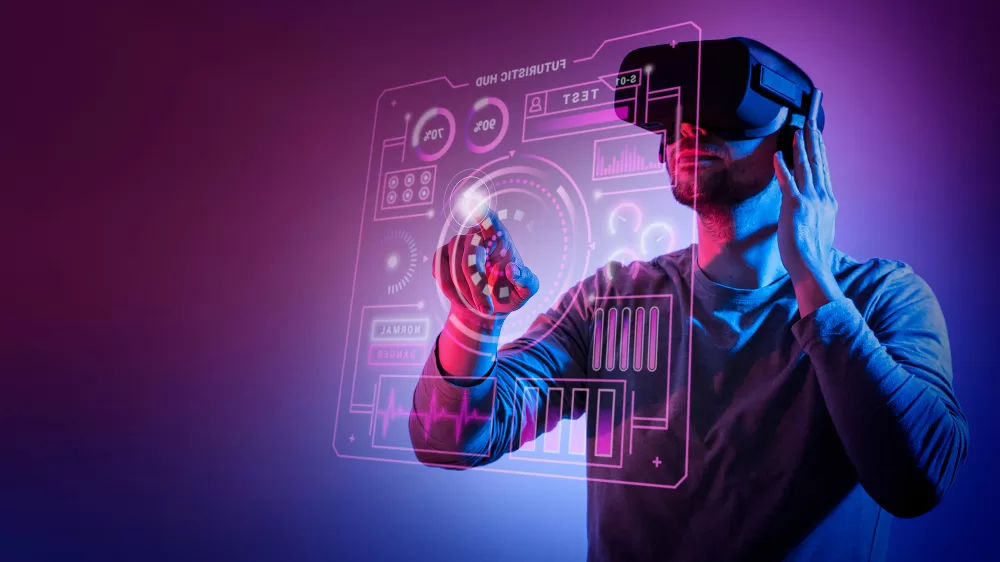The concept of mixed reality has emerged as a groundbreaking innovation. Mixed reality (MR) is a blend of both augmented reality (AR) and virtual reality (VR), allowing users to experience a seamless integration of digital content into the real world. With the ability to overlay virtual objects onto the physical environment, mixed reality is transforming various industries and bridging the gap between real and virtual worlds.
Understanding Mixed Reality
Mixed reality combines elements of both augmented reality and virtual reality to create an immersive and interactive user experience. Unlike virtual reality, which completely replaces the real world with a simulated environment, mixed reality overlays virtual content onto the physical surroundings, enhancing the real-world environment with digital elements. This integration enables users to interact with virtual objects while maintaining a connection to the real world.
The Technology Behind Mixed Reality
The foundation of mixed reality lies in advanced hardware and software systems. Headsets and devices equipped with sensors, cameras, and motion tracking technologies enable users to perceive and interact with virtual objects in real time. These devices map the physical environment and overlay virtual content seamlessly, creating a blended experience. Sophisticated algorithms and computer vision techniques analyze real-world surroundings and accurately place virtual objects within the user’s field of view.
Applications of Mixed Reality
Entertainment and Gaming
The entertainment and gaming industry has been at the forefront of embracing mixed reality development. With MR, users can engage in immersive gaming experiences, where virtual characters and objects are seamlessly integrated into the player’s physical environment. This technology has revolutionized the way games are played, allowing for a more interactive and lifelike experience.
Education and Training
Mixed reality has immense potential in the field of education and training. By merging virtual elements with real-world scenarios, MR provides learners with hands-on experiences in a safe and controlled environment. Medical students can practice complex procedures, architects can visualize and modify building designs, and astronauts can simulate space missions. These applications of mixed reality enhance learning outcomes and improve skill development.
Manufacturing and Design
Mixed reality is transforming the manufacturing and design processes by enabling engineers and designers to visualize and manipulate virtual prototypes in real time. This technology allows for rapid prototyping, iterative design improvements, and collaborative decision-making. With MR, stakeholders can review and interact with virtual models, making design iterations more efficient and cost-effective.
Healthcare and Rehabilitation
In the healthcare industry, mixed reality is being used for training, diagnostics, and patient care. Surgeons can utilize MR to visualize patient anatomy during complex surgeries, improving precision and minimizing risks. MR technology also plays a crucial role in rehabilitation therapies, where patients can engage in interactive exercises and simulations to aid their recovery process.
Advantages of Mixed Reality Development
Enhanced User Experience
Mixed reality provides a highly immersive and interactive user experience, combining the best elements of the real and virtual worlds. This enhanced experience offers new opportunities for entertainment, education, and professional applications.
Increased Productivity
In industries such as manufacturing and design, mixed reality accelerates workflows and improves productivity. The ability to visualize and manipulate virtual objects in real-time streamlines the design and prototyping process, reducing time and costs. Collaborative mixed reality environments also facilitate remote collaboration, enabling teams to work together regardless of geographical location.
Real-World Integration
Mixed reality bridges the gap between the real and virtual worlds by integrating digital content into the physical environment. This integration enables users to maintain a connection to the real world while interacting with virtual objects, resulting in a more seamless and natural experience. This aspect of mixed reality distinguishes it from other immersive technologies and opens up new possibilities for various industries.
Mixed reality development has emerged as a game-changer, revolutionizing industries such as entertainment, education, manufacturing, and healthcare. By seamlessly blending virtual content with the real world, mixed reality technology offers enhanced user experiences, increased productivity, and real-world integration. As technology continues to evolve, we can expect to see even more innovative applications and opportunities for mixed reality, further bridging the gap between the real and virtual worlds.
Digiware IT Solution offers a range of Virtual Reality (VR) development services. Mixed Reality combines elements of both virtual reality (VR) and augmented reality (AR) to create immersive and interactive experiences.
Our team of skilled developers and designers can help you leverage the power of Mixed Reality to enhance your business operations, create engaging training programs, develop interactive marketing campaigns, and design captivating entertainment experiences.
Augmented Reality Services
AR Application Development: We create custom AR applications tailored to meet your specific business requirements. These applications can be used for product visualization, interactive user experiences, training simulations, and more.
AR Content Creation: Our team specializes in developing engaging AR content, including 3D models, animations, and interactive elements. This content can be integrated into your existing applications or used in standalone AR experiences.
AR Marketing Solutions: We help businesses leverage AR technology to enhance their marketing campaigns. Whether it’s creating interactive AR advertisements, virtual try-on experiences, or location-based AR promotions, we can assist you in reaching your target audience in innovative ways.
Virtual Reality Services
VR Application Development: Our experts design and develop immersive VR applications for various platforms, including desktop, mobile, and virtual reality headsets. These applications can be used for training, virtual tours, gaming, and more.
VR Content Creation: We create high-quality 3D environments, realistic simulations, and interactive experiences for VR. Our content creation services span across industries, including architecture, education, healthcare, and entertainment.
VR Training Solutions: We provide VR-based training solutions that offer realistic and engaging learning experiences. From employee onboarding to specialized training modules, our VR training solutions can help enhance knowledge retention and improve performance.

